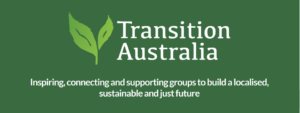Gratitude and reciprocity are the currency of a gift economy, and they have the remarkable property of multiplying with every exchange, their energy concentrating as they pass from hand to hand, a truly renewable resource. I accept the gift from the bush and then spread that gift with a dish of berries to my neighbour, who makes a pie to share with his friend, who feels so wealthy in food and friendship that he volunteers at the food pantry.
To name the world as gift is to feel one’s membership in the web of reciprocity. It makes you happy—and it makes you accountable. Conceiving of something as a gift changes your relationship to it in a profound way, even though the physical makeup of the “thing” has not changed. A woolly knit hat that you purchase at the store will keep you warm regardless of its origin, but if it was hand knit by your favourite auntie, then you are in relationship to that “thing” in a very different way: you are responsible for it, and your gratitude has motive force in the world. You’re likely to take much better care of the gift hat than the commodity hat, because it is knit of relationships. This is the power of gift thinking. I imagine if we acknowledged that everything we consume is the gift of Mother Earth, we would take better care of what we are given. Mistreating a gift has emotional and ethical gravity as well as ecological resonance.
Robin Wall Kimmerer
https://emergencemagazine.org/essay/the-serviceberry/
Welcome to the November/December edition of Localising Leanganook. In this edition you will find information about:
- Boorp Boorp Boondyil Exhibition– Another step towards Reconciliation
- Ausnet Transmission Towers and VNI West Update
- Upcoming Climate Action in Bendigo- Central Vic Climate Action
- Housing in Mt Alexander Shire- No Room at the Inn?
- Castlemaine Seed Library
- Climate Emergency- Mt Alexander Shire and Wararack – your feedback
- Christmas Carols at Yandoit Cultural with Castlemaine Choir
- Hepburn Matters- A Community Meeting on the Future of the Rex
- Some Democracy Thoughts- Democracy 4 Dinner
- Northern Arts Hotel- What’s On
- Managing Natural Shelter Belts
- Mt Franklin Organics
- Kavisha Mazella concert at Yandoit Cultural raises money for Ukrainian Refugees
- Keeping Plastic out of Landfill
- Climate Emergency Letter
- Housing Affordability in Hepburn Shire
- Growing Abundance and Fruit Trees
- Shape Mt Alexander- Have your say
- Sustainable Agriculture- Building Johnson-Su Composting Bioreactors
- Alliance For Responsible Mining Regulation Launches 10 point reform plan
- Climate Action Court Case
- River Detectives- 2023 Registrations
- Story Telling Masterclass
- Hepburn Wholefoods
- Flood Resources
- New Economy Network- Housing Week Recordings
- Walking Together – Jan Wositzky
- Mt Alexander Shire- Community Reference Group – 10-year Climate Change Strategy
- Wombat Forest Care
- Farmers for Climate Action
- Loddon Campaspe- Development of a Regional Food Systems Framework
- Transition Australia
- Climate: The Long Game- Castlemaine Free University Reading Group 2022–2023
- Repair Cafes
- Renewable Newstead- Solar Farm takes a big step forward
- Harcourt Organic Farming Cooperative
- Mt Alexander LETS
- Food for Thought
1. Boorp Boorp Boondyil Exhibition – Another Step Towards Reconciliation
A contribution from Ed Butler, (Manager, Communications and Customer Services Mt Alexander Shire Council) to WALKING TOGETHER – towards Makarrata
“This is a story my father told me. It’s hugely important to pass it on to our children, and our children’s children” – Uncle Rick Nelson
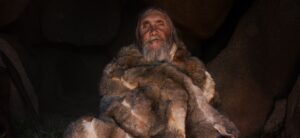
The Mount Alexander Shire community has taken a huge collective step towards Reconciliation this month with the opening of the extraordinary Boorp Boorp Boondyil exhibition. The exhibition, which now has a permanent home in the historic Market Building in Castlemaine, is the result of nearly a decade’s work of Uncle Rick Nelson and his father Uncle Brien Nelson, along with numerous other First Nations community members and allies.
Boorp Boorp Boondyil, which loosely translates to ‘passing knowledge to the children’, was produced by Uncle Rick with support from local children themselves, alongside Nalderun Aboriginal Education Corporation, Sharing Stories Foundation and Mount Alexander Shire Council. The exhibition also features artwork by First Nations artists Alvin Darcy Briggs and Aunty Marilyne Nicholls.
Photo: Uncle Rick Nelson
Boorp Boorp Boondyil is pronounced ‘Boorp’ as in ‘torpedo’ and ‘Boondyil’ as in ‘book’, and is a name gifted to the project by Uncle Rick.
This permanent exhibit will provide residents and visitors with an opportunity to walk through an interactive space, where they will learn the history of the area, including the story of the Eagle, the Bat and the Crow, the Creation Story of the Dja Dja Wurrung in the Mount Alexander region, as told by the Nelson family. The exhibition also includes important cultural lessons about living on Country and bush foods, medicine, waterways and weaving.
It welcomes visitors onto Jaara Country, and serves as a starting point to learning more about the rich history of this land’s traditional custodians. Boorp Boorp Boondyil also includes immersive and interactive opportunities to discover Dja Dja Wurrung language, and Jaara stories and teachings. Vitally, this was first and foremost a Dja Dja Wurrung project – Uncle Rick was hired as a Council staff member for a full year as project leader, overseeing the design and development of the exhibition and its content. A demonstration of self-determination, with the institutional backing of the local Council, is a wonderful example of how far this community has come in recent years.
The exhibition was launched by Uncle Rick, Mayor Bill Maltby, and Maree Edwards MP in front of a huge and enthusiastic crowd, featuring performances by Alvin Briggs and Justice Nelson. The region’s journey towards reconciliation continues, and has a long way to go. A permanent exhibition, created and led by an Elder, that shares – and enhances – the space of the historic Market Building, will serve as a central space on which residents and visitors can begin or continue their own journeys for years to come.
Nalderun Education Aboriginal Corporation is a service that supports the Aboriginal Community, led by Aboriginal people. Many people and organisations in the Mount Alexander Shire contribute to Nalderun; the name is a Dja Dja Wurrung word meaning “all together”.
More information can be found at www.nalderun.net.au
2. Ausnet Transmission Towers and VNI West Update
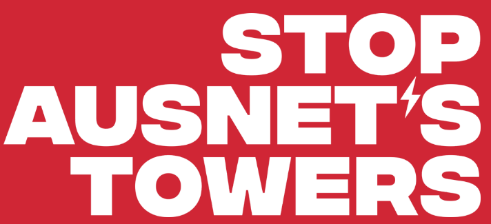
Join the thousands of members of the Moorabool and District Power Alliance (MDPA) by subscribing your email address at https://www.stopausnetstowers.com.au/get-involved/ Joining MDPA costs nothing. MDPA are the umbrella community group challenging the Western Renewables Link (WRL) a project that includes a proposed $470m substation on 17 Ha of prime agricultural land in Newlyn near the Swiss Mountain. This proposed substation is to be the launching pad for the proposed 85m tall VNI West powerline project which will cut through parts of Hepburn and Mt Alexander shires on its way to Bendigo.
Within the next 2 weeks MDPA are launching a federal court action aimed at forcing Australian Energy Market Operator (AEMO) to take the WRL project back to the drawing board. The VNI West powerline project will need to be reconsidered if the MDPA court challenge is successful.
The VNI West powerline was the subject of two Hepburn Shire organised community meetings at Yandoit Mechanics Institute on October 12. Three senior staff members from AEMO outlined AEMO’s logic for the need for VNI West and the process for deciding on the 85m tall powerline’s viability and its route. At these very well attended community meetings AEMO stressed VNI West is expected to be completed within 9 years (the next day a ministerial media release reduced this to 6 years) and has been declared a project of national significance by state and federal ministers.
AEMO said that no decision has been made on the specific route for the powerline at this stage (specifically whether it follows the existing Ballarat to Bendigo powerline route through Werona, Yandoit and Clydesdale, Strangways, Muckleford). AEMO also mentioned that the existing 35m tall line traversing our area may be pulled down after the new line is completed. AEMO also asked that we send them any comments or concerns via the project email address at VNIWestRITT@aemo.com.au. Thanks to Hepburn shire for organising these meetings and to the 3 AEMO people for making the effort to come to our little community!
Please consider joining MDPA and adding to the thousands of MDPA existing members. Every member helps MDPA show the Federal Court the breadth and depth of their community support in getting local voices involved in the location of powerline infrastructure traversing our communities. Success in MDPA’s Federal court challenge will reduce the probability of VNI West cutting through and destroying our beautiful area. Contact Richard Johnston (0422 150 010) if you’d like more information. www.stopausnettowers.com.au/get-involved/
With thanks to Richard Johnston, Yandoit Hills
- Overhead powerlines are a proven bushfire risk
- They will destroy Victoria’s highest producing agricultural land
- They will decimate endangered species’ habitat
- They will impact on property values
- Tourism and the Environment will suffer
3. Upcoming Climate Action in Bendigo- Central Vic Climate Action
WHAT? Central Vic Climate Action is planning an action targeting NAB in Bendigo
WHERE? the NAB building, 57-59 Mitchell St, Bendigo
WHEN? Friday 2nd December, 2022 at 3.15pm until 5 .00pm

WHY? In 2022 we are in a climate emergency and yet:-
- Whitehaven Coal plans a large expansion of its coal mines in NSW!!
- NAB bank agrees to lend them millions of $’s for the expansion??
- COP27 fails in Egypt – countries do not agree to significantly reduce carbon emissions, nor to aid Pacific island nations already suffering!!
This is NOT acceptable and we need people to join us at the bank on Friday to raise awareness about NAB and its deadly link to this rogue coal company, Whitehaven.
We are planning a fun event with movies and singing etc. So bring along your pop corn and your deck chair. Most importantly bring along your friends and meet us outside the bank in Mitchell Street.
RSVP Trevor 0412 250 392 or Laura 0412 887 835
Please let us know if you are coming; and please advise if you have any skills such as banner/placard making, photographing, filming etc.
4. Housing in Mt Alexander Shire- No Room at the Inn?
What: Discussion about Affordable Housing with My Home Network, organised by Castlemaine Free University
When: Monday December 5th, 7pm
Where: Northern Arts Hotel, Castlemaine
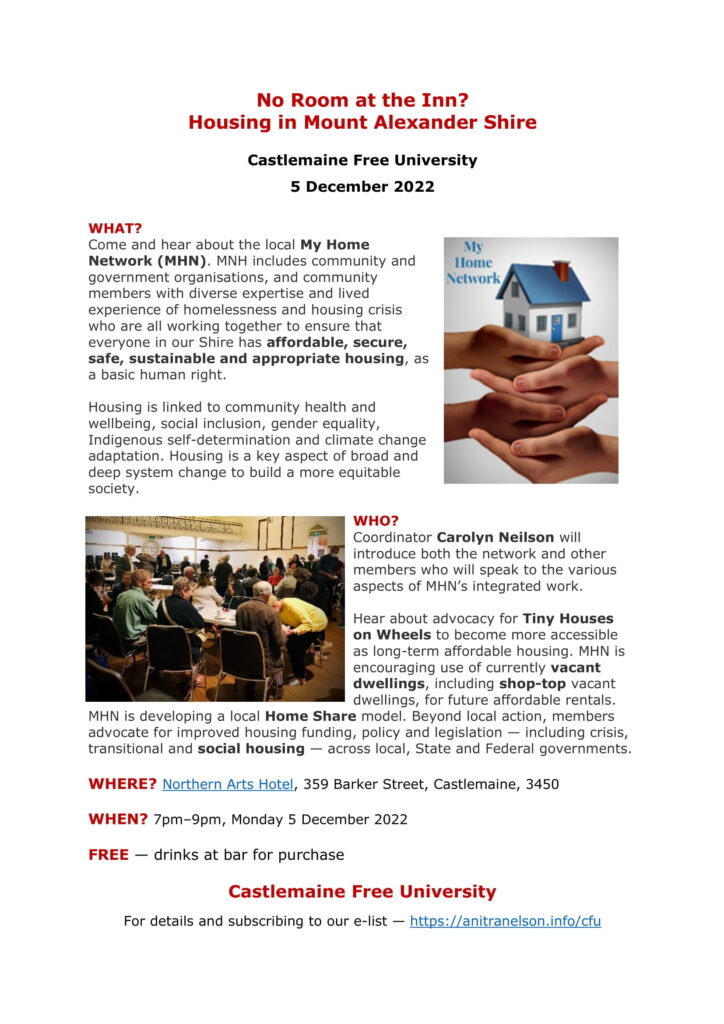
5. Castlemaine Seed Library

‘Nice weather for ducks’ was my father’s favourite thing to say when it was raining. My vegetables are enjoying it, as I don’t have irrigation, they are used to growing with as little water as possible. Now I see how big everything would be if I did have irrigation! After the October rains we are left with a new dam and fragrant swamp to the side of our house, (house, studio and sheds not flooded, fortunately) where the frogs noisily enjoy themselves every evening, and two sets of ducks have raised lots of little baby ducks.
Working Bee: Thursday 1st December will be the last working bee for 2022. If you would like to join our friendly group at the library at 11am for seed packing, we will be delighted to see you there! My thanks to our regular volunteers, for all your help packing seeds, making up labels, re-stocking the board, helping to plan what next, growing out seeds to test varieties and donating seeds. Nice work, team! There’s no working bee in Jan, so we are back at it in February.
Seed donation

Gregg from Useful Seed has once again generously donated lots of seed to the seed library. There will be some variety in the plants that grow from some batches of these seeds. Gregg grows lots of varieties of the same plant together to create landraces, plants with a lot of genetic diversity. They develop over time through the plant’s ability to adapt to the environment it finds itself growing in.
As Gregg says: ….we want to offer genuinely new varieties, developed for home growers….we ‘mix up’ varieties through intentional crosses, so gardeners can select new varieties that suit their purposes from the resulting hybrid swarms.” (http://www.usefulseeds.com/)
So, for example, if you find that a particular corn plant thrives in your garden, or grows faster, or grows a lot of cobs, or grows very sweet cobs, save seed from that one. We note on the packet where our seeds come from, so read the packs to know if you have Useful Seed, and expect some diversity in the resulting plants.
6. Climate Emergency- Mt Alexander Shire and Wararack – your feedback
Consultation session
There is a strong commitment across the shire for communities to work together to respond to the declaration of a Climate Emergency by Mt Alexander Shire Council in 2019.
As a part of this journey Mount Alexander Shire Council and Wararack are partnering to run two, two-hour community consultation sessions that we would love for you to be a part of.
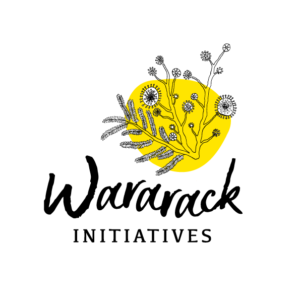
The Wararack ask:
Wararack is a coalition of local people in support of a shire-wide, community led building of generative and regenerative ways of living in response to the climate crisis. We seek to promote action that helps us collectively reach zero net emissions, better prepare for climate impacts, to embrace change and to forge new ways of doing and thinking about things. Our goal is to reclaim a climate-safe future for the next generation and beyond. We are currently defining the process for this transition. For this we would love to hear from you.
The first hour of each session will focus on what we need to transition to move from our current ways of living to collectively build resilience, equity and care for Country into our systems and culture while we transition to zero net emissions.
Council’s ask:
Council is about to develop a 10-year Climate Change Strategy. Our shire is already facing climate change impacts. We know we need to reduce greenhouse gas emissions, whilst continuing to adapt to impacts like extreme weather. But what does this look like in practice? How can Council best support the transition we know is needed? And how does Council prioritise its tight resources for the best outcomes?
We plan to use the second hour of each session to explore these questions.
When and Where:
There are currently two workshop sessions to choose from.
- Register here for session 1 = In person – Wednesday 7 December 12.45 for 1pm start and 3pm finish at the Senior Citizens Centre, Mechanics Lane, Castlemaine
- Register here for session 2 = Online – Wednesday 7 December 5:30pm to 7:30pm, Zoom meeting
Session Facilitators:

Sharon Fraser from Wararack
Amy Brand and Rob Law engaged by Council for development of the strategy
Further Information:
Click here for more information on Wararack.
Click here for more information on Council’s Climate Change Strategy process.
Have any additional questions? Please email climatechange@mountalexander.vic.gov.au and/or connect@wararack.org and a member from the relevant team will get back to you.
Survey
Mt Alexander Shire Council is asking residents to share their views on climate change to help inform the development of the new 10-year climate change strategy.Through this survey, the shire hopes to get a strong sense of the areas our community are most concerned about when it comes to climate change, and areas they’d like Council to focus on. Please complete our survey at https://shape.mountalexander.vic.gov.au/climate-change-strategy-2023-2033
The survey takes 10-15 minutes to complete, and provides an option to go in to a draw for a $100 voucher from a local business. It closes on Sunday 11 December.
7. Christmas Carols at Yandoit Cultural with Castlemaine Choir
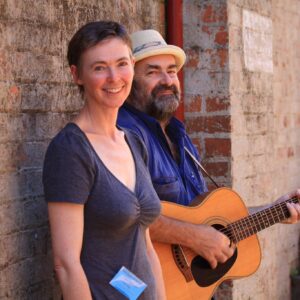
A night of carol singing with the Castlemaine choir, led by Jane Thompson and James Rigby. As well as singing there’ll Christmas stories, a visit from Santa and supper under the eucalypts.
When: Sunday December 11th, 7pm
Where: Yandoit Cultural– the old Uniting Church in the bush- Uniting Church Rd, Yandoit.
8. Hepburn Matters- A Community Meeting on the Future of the Rex
When: Tuesday December 6th at 7pm
Where: Radius Gallery, 76 main Road, Hepburn Springs

Hepburn Matters Inc. was formed by Rethink the Rex group to advocate for local assets. Hepburn Matters is asking for your support as they advocate for community assets! Sign the petition calling on Councillors to favourably consider bids for THE REX that include provision for community use and heritage protections. ![]() https://chng.it/yjgYm2d5
https://chng.it/yjgYm2d5
9. Some Democracy Thoughts- Democracy 4 Dinner
Democracy for Dinner, based in Castlemaine, is preparing a regular newsletter. Here’s some excerpts:
Election day is pretty much what every Australian equates with democracy, but it hasn’t always been the case. As David Van Reybrouk argues in his excellent book Against Elections (full review in an upcoming newsletter!), democracy was never intended to be purely ‘representative’, and not only ‘electoral’ either. 
There are many examples of other democratic systems already in use around the world. We will explore these further in future posts and newsletters, but here is a taster of two of the most impactful:
Direct democracy – essentially, voting on issues, rather than representatives (or, worse, parties). We have direct democracy in Australia (though rarely) via referenda. In other countries this is much more common.
- In Switzerland, for example, representative democracy is coupled with a citizens initiative system. Any citizen of voting age can proposed constitutional amendments (‘popular initiative’) or seek a referendum on a law passed at any level of government (‘optional referendum’). (Switzerland also has a more sophisticated ‘bottom up’ federalism model, which has local cantons collecting taxes).
- Even the United States, many states have ‘ballot initiatives’ at any given election. At the recent US mid-terms, for example, there were a plethora of initiatives asking questions on abortion, climate action, voting rights and legalising marijuana. Most of these are legally binding (or highly influential) on State legislatures
Direct democracy can be great, where the situation is relatively simple, or where the issue is significant in the public mind and people have had access to good information to make up their minds. But it just can’t work for everything. The problem with direct democracy is that it can be highly susceptible to reactionary, surface level responses, and is easily manipulated by misinformation (if you believe the hype, something like a direct democracy model is part of Elon Musk’s long-term plan for Twitter – which should be fun to watch).
Deliberative democracy – deliberative approaches allow a small number of people, often chosen to be representative of the population, to consider a complex issue, hear from experts and reach a view through considered dialogue. A well-functioning parliament ought to be a deliberative mechanism, but the proliferation of political parties and partisan voting has all but extinguished this.
More effective examples involve citizens assemblies or citizen’s panels, chosen at random (but can be weighted for demographic characteristics for example). There is really strong evidence that given an opportunity to deliberate, people make better choices. Successful examples are big and small: in Victoria some water authorities are using citizen panels to set prices, local governments are required to use deliberative approaches by the 2020 Local Government Act. Iceland held a citizen panel for its constitutional reforms, Ireland did the same for the constitutional reforms that enshrined a right to an abortion.
Expect to hear much more on this in future newsletters. In the meantime, our friends at Change Politics are hosting an event on 7 December to hear directly from the Secretary-General to the President of Ireland about the Irish experience. Or ‘how politics can make room for people. Check it out by clicking the button below
For more information and updates from Democracy for Dinner: https://www.facebook.com/DemocracyforDinner/
Send Democracy 4 Dinner an email if something has caught your eye that you want to discuss, or to book your place in one of our events: info@democracy4dinner.org
10. Northern Arts Hotel- What’s On
FILM
Secret Matinee Film | Sun 27 November at 2.30pm
Brooklyn Arts Hotel Documentary Crowd Funding Request
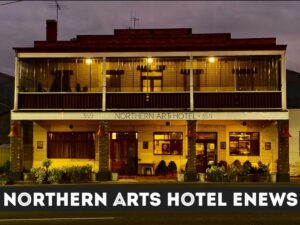
MUSIC
Open Mic Livestream at the Coolroom | Wed 23 November
Maine-ly Ukes | Thurs 24 November
Guildford Folk Club @ The Coolroom | Thurs 24 November
Ernest Aines & Jack Skellern | Fri 25 November
The Pardoners | Sat 26 November
The Jam Tarts Celebrating Xmas | Fri 2 December
CDoc Club Mighty Horse | Sat 3 December
The Maine Course Celebrating Xmas | Friday 9 December
Maggie Sings Christmas with her NY Jazz Quartet | Saturday 10 December
SPOKEN WORD | TALKS | WORKSHOPS
PoetiCas at the Coolroom | 26 November
CDoc Club Masterclass for Story Tellers | Sat 3 December
CFU | No Room at the Inn? Housing in Mt Alex Shire | Mon 5 December
Northern Arts Book Club
PROJECTIONS
Another Roadside Attraction Live Nightly in Wimble St
11. Managing Natural Shelter Belts
Shelterbelts guide now available
Native shelterbelts are great for providing stock with shelter and shade, and can also help mitigate erosion, control pests and support native wildlife. Connecting Country has long advocated for the use of native shelterbelts in our landscape, as they provide a variety of services for agriculture and the environment. We are excited to have access to a recently published guide by the Sustainable Farms program at the Australian National University (ANU) on planting and managing native shelterbelts. It is an excellent resource for farmers and other landholders. Please read on for details and the link to the guide.
Planting native shelterbelts on farms is a significant act of land stewardship, one that also delivers demonstrated productivity and biodiversity benefits.
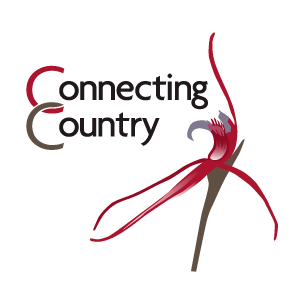
Shelterbelts are generally linear strips of vegetation, intended to provide shelter, shade and wind breaks. Well-managed and diverse native shelterbelts can have productivity benefits for cropping and grazing enterprises while supporting hundreds of species of birds, mammals, invertebrates, frogs and reptiles.
This management guide details the science behind shelterbelts and outlines how to create effective shelterbelts on farms.
Shelterbelts can be a strip of newly planted trees and shrubs, or can involve the restoration of existing remnant vegetation. Shelterbelts can also incorporate other landscape features such as paddock trees, farm dams, creeks and rocky outcrops. All forms of shelterbelts can significantly improve on-farm biodiversity and deliver productivity benefits to livestock, crops and pastures.
About 85% of the original woodland vegetation has been lost across southeast Australia, and in some regions just 3% remains, predominantly on farms. Planting shelterbelts is one way to help restore this native vegetation cover, and improve habitat connectivity for wildlife.
Australian research indicates that the total amount of native vegetation across a property or the broader landscape is more important than the size of individual patches or plantings. Even small shelterbelts can make a worthwhile contribution to biodiversity. Livestock and wool productivity gains, increases in crop and pasture production, more pollinators, and reductions in costly crop and pasture pests, such as red-legged earth mites, have all been associated with the introduction of shelterbelts on farms.
To download a copy of the ANU’s new guide to shelterbelts – click here
Published by Connecting Country on 16 November, 2022: https://connectingcountry.org.au/
12.Mt Franklin Organics
Veggies, herbs and seedlings are available at Daylesford’s Sunday market or directly from Florian’s farm behind Mt Franklin, on Saturdays between 11 and 2. Please CALL beforehand – mob 0412 517 013. Address is 180 Church Rd, Mt Franklin come down the driveway and park in front of the shed with verandah.
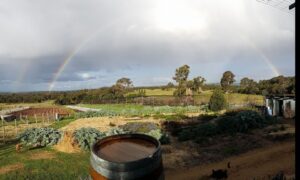
13. Kavisha Mazella concert at Yandoit Cultural raises money for Ukrainian Refugees

It was a full house at Yandoit Cultural on November 13th thanks to singer, songwriter and story teller Kavisha Mazzella, accompanied on base-guitar and violin by Nick Lyon. Ukrainian born Michael Olijnyk introduced the concert with background information about the Ukraine and Russia.
And from our generous community we raised $2150. This money will go directly to a church on the Polish border where 90% of refugees are finding sanctuary. No administration costs will be deducted and monies will contribute towards shelter, food and medicine especially as the winter draws in.
If you would like to make a donation email Nikki: ycfcpg@gmail.com
14. Keeping Plastic out of Landfill
Collaboration between the Good Op Shop, Mt Alexander Sustainability Group and Castlemaine Secondary College.
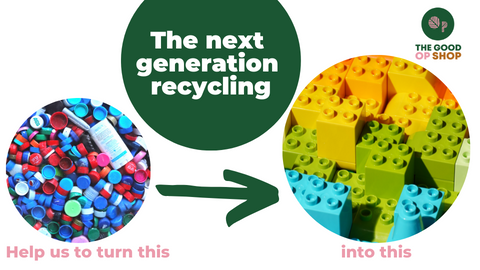
The Good Op Shop and Castlemaine Secondary College are working together to raise money to buy the school machines that will shred plastic bottle lids, melt them down and turn them into a new product to sell. These machines use an exciting new technology that can make interesting products such as USBs, plastic sheets, pens and pots for plants from recycled bottle lids. Once a mold has been created, the shredded recycled plastic is poured in and shaped into a new product. This will help to keep more out of our landfill and reduce the amount of plastic that is only single use.
We want the students of Castlemaine Secondary College to learn about a circular economy by being a part of it and making enough money to create new molds and new products. Both The Good Op Shop and the Castlemaine Secondary School are contributing money to the purchase, but we still need to raise $10,000 to buy the machines. The school has set up a bottle lid recycling system and The Good Op Shop and the school will be one of the plastic bottle lid recycling collection points.
By helping the next generation to learn about recycling, to be a part of it and to benefit from it, we hope they will continue to find new ways to recycle more and more products and reduce waste into the future.
Please help to raise $10,000 so that we can purchase the machines for the school and help the students find ways to better look after the environment in the future. The Good Op Shop and Castlemaine Secondary College will contribute $5,000 but we still need $10,000 more to buy the machines.
https://www.mycause.com.au/…/the-next-generation-recycling
15. Climate Emergency Letter

Two years ago I wrote to this newspaper (The Age) about the ills of jet travel in a climate emergency. Yet, in spite of the carbon footprint of jet planes being significantly under-measured in the past, last Saturday’s Age was awash with ads and articles promoting travel to overseas destinations. Australia, particularly NSW, continues to suffer from extensive flooding and, if you watch the national news you’ll know that floods, fires and extreme weather events are not confined to Australia, they are everywhere around the world. Six years ago I was part of a huge campaign to stop the Adani coal mine. Today this mine is proceeding. The Northern Rivers area has had a one in one hundred year flood not once, but five times this year and yet, one of the big four Australian banks has a plan to lend billions of dollars to a large coal company, so that it can embark on yet another huge project. The big question for me is are we going to continue to be lemmings rushing to the edge of the cliff- top ready to jump or, are we going to step up and demand that our government puts and end to this nonsense?
Trevor Scott, Castlemaine
16. Housing Affordability in Hepburn Shire
Please share your views on housing supply and affordability in Hepburn Shire
Like in many areas of Victoria, it is getting harder for people to find a permanent home in Hepburn Shire that they can afford and meets their needs. It is affecting people on lower incomes but also people in key jobs that are needed to support our local services and business, like hospitality, tourism, farm workers, nurses and other carers.
There are more than 300 households in Hepburn Shire that are either homeless or are in housing stress – unable to afford their basic needs after paying for housing.
Hepburn Shire Council is currently seeking input from the community about what Council could do to help the situation. Most factors that drive housing affordability are outside the direct control of local government and the community. However, there are some things we can do to encourage more affordable housing to be available in the Shire. The feedback from the community will help us develop an Affordable Housing Strategy and Action Plan to guide our work.
Your views are important. The Strategy aims to increase the supply and availability of permanent homes for people in Hepburn Shire that are affordable and suitable. It is really important that we hear all views and perspectives to inform the actions we might take.
How to participate: We’ve analysed research and data on the issue of housing affordability in the Shire – and put together ‘A Home in Hepburn Shire: Issues and Options Paper’. We’d like to hear your views on the different options. You can provide your feedback until Sunday 4 December 2022.
Visit www.participate.hepburn.vic.gov.au/affordable-housing or scan the QR code at the end of this letter to complete the survey, read the Issues and Options Paper and find out more. You can call us on (03) 5348 2306 or email shire@hepburn.vic.gov.au if you would like us to send you a hard copy.
You can also register your interest to attend our Affordable Housing Solutions Forum on the evening of Wednesday 8 February 2023, where we will bring together different perspectives to discuss and prioritise potential actions based on the community feedback and other research.
If you, or your group, would like to arrange a meeting to discuss council’s Affordable Housing Strategy & Action Plan, contact Damien Kennedy, Acting manager, Strategic Planning on 5421 6422.
17. Growing Abundance and Fruit Trees
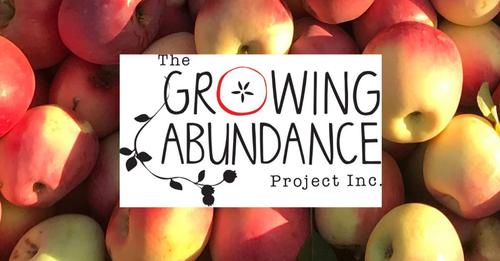
A call out for fruit! It is the time of mulberries, cherries and apricots. If you have any of these trees in your back garden or orchard and you need help harvesting and making use of your fruit, please get in touch at hello@growingabundance.org.au.
18. Shape Mt Alexander- Have your say

Mt Alexander Shire is looking for feedback on a number of Council projects and initiatives.
Castlemaine Heritage Study
Help us strengthen heritage protections for Castlemaine.
Climate Change Strategy 2022-2033
Work with us to protect our shire from the threat of climate change.
Housing and Neighbourhood Character Strategy
We’re planning for growth, housing and neighbourhood character in Castlemaine, Campbells Creek and Chewton.
Active Transport Strategy
Work with us to plan for the future of active transport.
19. Sustainable Agriculture- Building Johnson-Su Composting Bioreactors
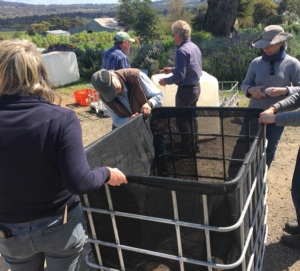
Johnson Su composting bioreactors were being constructed by farmers from the Mt Alexander Regenerative Agriculture group last month.
The Johnson-Su bioreactor composting method is a no turn, self-aerating compost system that breaks down the compost material aerobically. The end product is a microbially diverse fungal and nutrient rich compost product which has the consistency of clay. This product has many uses, it can be mixed into a slurry and used as a seed coating prior to sowing. The product can also be used to make a liquid extract that contain a rich and diverse community of soil microbes, especially fungi. The extract needs straining to remove all the solids before being sprayed onto the paddock or directly into the seed furrow.
The participants all contributed to building a Johnson-Su composting bioreactor either for themselves or helping others. The workshop was run by Ross Davey and Michael Mason from Central Victoria Regenerative Farmer group. They have built many of these units for themselves and other group members using the compost extract on their own properties.
For more information: Darren Bain, Regional Agriculture Landcare Facilitator
Ph: 5440 1893 M: +61 419 560 348
E: darren.bain@nccma.vic.gov.au
20. Alliance For Responsible Mining Regulation Launches 10 point reform plan

As Victoria continues to experience a boom in minerals exploration and development, it is essential that we learn from past impacts. While mining helped build the state’s economy in the 19th century, the current boom threatens regional communities and farmland, and will use increasingly scarce surface and groundwater. All proposals must be carefully scrutinised and managed to avoid reckless and short-sighted approvals so that this and future generations of Victorians are not exposed to even more social, economic, and environmental harm.
In 2021, a range of local groups concerned about the impacts of mining started to meet to share skills, strategy and knowledge. Over time, this informal network developed into the Alliance For Responsible Mining Regulation (ARMR). ARMR calls for an overhaul of mining regulations that must result in better outcomes for the community and environment. ARMR has launched a blueprint for reform of the laws around mining in Victoria.
ARMR believes that Victoria’s Mining Act must be updated to reflect current social, economic, and environmental conservation and biodiversity expectations, including fair compensation for directly and indirectly affected landholders and communities. Legislation and regulations must enforce international best-practice, and include the prohibition of upstream and wet tailings dam facilities to remove the ongoing negative impacts on communities, soils, and water and to alleviate the risk of a catastrophic dam failure and subsequent impacts on neighbouring communities and the environment. Royalties must be brought in line with those of other states and licensing must include the addition of a levy to secure funding for the rehabilitation of abandoned mine sites and the reclamation of Victoria’s many legacy sites
Robyn Grant, President of Mine-Free Glenaladale, said:
“Mine-Free Glenaladale is grateful that ARMR is drawing attention to just how broken mining regulation is in Victoria. It’s time for politicians and decision-makers to start acting for communities, local economies and the environment and to put a stop to mining companies being able lie about resources and profitability and then to walk away leaving a trail of destruction and heartbreak behind.”
“What will it take for political parties of all persuasions to start acting responsibly when it comes to mining regulation?”
“ARMR’s 10-point-plan clearly shows what must be done if governments are to have any hope of gaining community trust in mining regulation.”
“The ARMR document is the only thing Mine-Free Glenaladale has seen that clearly outlines what is wrong with mining regulation in Victoria and what must be done to avoid further destruction of communities, local economies and the environment.”
“ARMR’s 10-point-plan gives a path for overcoming the shoddy mining regulation that is costing Victorian communities and their environments dearly, and that is leaving all Victorian taxpayers with massive clean up bills while mining company directors slink away from the messes they’ve made.”
Kirsty McDonald, member of Save the Campaspe said:
“Victorian Mining Regulators are consistently failing to protect communities and the environment, preferring to focus on mining company profit and short term gains. Regional communities, the health and wellbeing of families, environment and biodiversity across Victoria is baring the full brunt of this bias towards mining companies which in turn is leaving a toxic legacy and land rendered useless for future generations.”
“With Fosterville Gold Mine acknowledging that their proposed expansion could affect regional groundwater resources, never has it been more important for Victorian Mining Regulators to protect downstream primary producers, families and communities that rely on this vital groundwater.”
“Local and State Governments need to stop being short sighted and start putting protections in place that prioritise families, environment and our waterways because mining companies have proven time and time again they will abandon the mine and fail to rehabilitate it.”
“ARMR’s 10 point plan is a responsible, considered, evidence-based approach, with lived experience of mining being a major catalyst for the call to overhaul Mining Regulation in Victoria.”
Col Finnie, Administrator, No Drilling (and no more gold mining) in our Valleys group in north eastern Victoria said:
“The atrocious record of gold mining in Victoria is a “sleeping” environmental travesty in many parts of the state. ARMR is an alliance of many activist groups throughout Victoria aiming to put focus on the detrimental effect of gold mining in this State. The long history of no rehabilitation of mine sites and environmental damage and the apparent disinterest by politicians of all colours motivated the formation of the alliance”.
Further comment
Robyn Grant, President of Mine-Free Glenaladale, 0438 571 586; Col Finnie, 0428315487; Dr Dora Pearce PhD, Environmental Epidemiologist, Ballarat, 0438197373
The AFMR has been meeting regularly for the past 6-9 months to share concerns about mining between communities across Victoria. This initiative has been fostered and supported by Friends of the Earth. Though this process the Alliance has developed a 10 point plan designed to bring Victoria’s mining regulations in line with world’s best practice.

Central Victoria has been ravaged by mining in the past and there are a number of active active mine sites operating within the region.
The Victorian Auditor-General’s Office (VAGO) Rehabilitating Mines Report (2020) paints a stark picture of some of the problems with mining regulation Victoria1. However, the report limits itself to an assessment of the rehabilitation of mines in Victoria and fails to draw attention to, and evaluate, the numerous other aspects of mining approvals and regulation that demand a complete overhaul of the related legislation and regulations, and of any Memoranda of Understanding between Government Departments charged with regulating mining related matters. The VAGO report clearly illustrates the consequences of the ongoing failure to separate the licensing and regulatory roles of Earth Resources (ERR). This conflict has led to persistent regulatory failure and has caused significant, and long-term, harm to Victorian communities, local economies, and the environment. It has also unnecessarily and unfairly left Victorian taxpayers with the massive financial burdens associated with mine rehabilitation and the reparation of watercourses and landforms.
The ARMR Alliance consist of the following groups: Bendigo & District Environment Council; Don’t Undermine Steiglitz; East Gippsland Alliance; Gasfield Free Bairnsdale; Let’s Stop Proposed Mining in North East Victoria; Maldon Community Alliance; Mine-Free Glenaladale; No Gold Diggings Castlemaine; No Gold Drilling (and No Gold Mining) in our Shire Valleys; No Mining Yandoit Region; No Wombat Gold; Save Huntly Streamside Reserve; Save the Campaspe; Wombat Forestcare; Dr Dora Pearce PhD, Ballarat, Victoria.
A 10-Point Plan has been developed and is being sent to state MPs and candidates prior to the state government election scheduled for November 26th. Here’s the 10 poitnplan. Send this to your MP’s/candidates.
- Where conflicts occur over approvals and licensing, mining regulation and related authorities, including ERR, DHHS, EPA and DELWP, must prioritise community and environmental health, and the protection of existing economies local economies, over resources development.
- The Minerals Resource and Sustainable Development Act and Regulations to be amended to require a social, economic and environmental impact analysis to assess an area’s suitability for mining before an Exploration Licence is granted. Farmers to be given veto over exploration licences.
- Effects of climate change on water availability be factored into all EESs with security of potable water for human consumption, agricultural/horticultural industries and environment flows into the future taking priority over water for mining.
- The Environment Effects Act and EES process must be modernised in line with recommendations of the VAGO inquiry and in line with best practice in other states and territories. Penalties to apply for intentionally misleading decision-makers and local government and communities should be fully funded to facilitate their responses, including the acquisition of scientific and technical expertise and relevant legal fees.
- All mining project proposals to model the impacts of climate change and to include Scopes 1, 2 and 3 Reduction in emissions from mining companies must be included in the Victorian Climate Change Strategy.
- All Workplans are to be made publicly available and all proposed Variations to Workplans will require a supplementary Environment Effects Statement with an opportunity for meaningful public consultation.
- Victoria to implement the Global Industry Standard on Tailings Management. New upstream tailings dams must be banned, and there must be an immediate moratorium on modification of existing tailing facilities. Independent auditing, including dam wall failure assessment, of tailings facilities must be conducted. Downstream community emergency plans must be developed in consultation with communities and emergency responders, be formally approved and made publicly available.
- Rehabilitation bonds to be set to reflect the point of maximum disturbance and post closure management. Rehabilitation must be ongoing and not left till mining ends. Bank guarantees must be real, redeemable and covered by collateral. Bonds must be held by an independent organisation with zero cost to Bonds to be redeemed by the State if mines have been left in Care and Maintenance for three years.
- The MRSD Act to require full, adequate and fair compensation for directly and indirectly affected and neighbouring landowners, including for loss of opportunity and amenity and impacts on lifestyle, physical and mental health. Mining companies to pay the full costs of wear and tear on State and Local Roads and for accelerated depreciation of local infrastructure including waste disposal facilities. Fees and royalties to be raised to same levels as other states and redistributed fairly to local inhabitants and municipalities that bear the significant external cost associated with mining.
- To protect worker, community and environmental health, monitoring and reporting (including air quality, noise, emissions and water) must meet world’s best practice standards including at frequencies and sensitivities to permit timely and meaningful responses. Monitoring required is to be determined by independent experts in consultation with communities and relevant agencies and authorities and reports are to be made immediately publicly Failure to comply with monitoring, reporting and response requirements to carry deterrent penalties.
The 10 point plan can be accessed here.
To find out more or join the Alliance contact: John Lewis – johnlewis@arcimedia.com.au or Debra Waters – hello@nominingyandoitregion.com
21. Climate Action Court Case
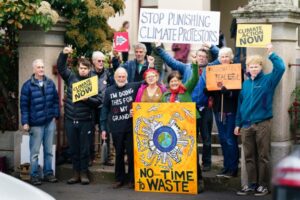
22. River Detectives- 2023 Registrations
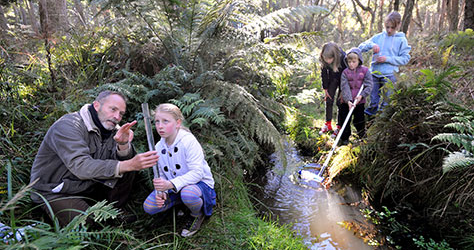
Registrations for the 2023 River Detectives program will open on Monday November 28 for schools and youth groups in the North Central CMA region.
As in previous years, priority will be given to schools that are within CMA priority project areas. These are;
• Bendigo Creek Citizen Science project
• Tullaroop Catchment Restoration Project
• RiverScan Native Fish Recovery (Gunbower and lower Loddon area)
• Caring for the Campaspe
• A Healthy Coliban Catchment
• Ramsar Kerang and Gunbower
• Castlemaine Urban Waterways
If you are a current River Detectives school, you will receive a registration pack over the coming weeks. New schools are encouraged to apply by heading to the River Detectives website after November 28 and clicking on the ‘apply now’ link. To find out more about the program and how it could work in a school near you visit https://www.riverdetectives.net.au/
For more information: Tania MacLeod, Citizen Science Coordinator North Central CMA Phone: 03 5440 1845 Email: tania.macleod@nccma.vic.gov.au
23. Story Telling Masterclass

We’ll be looking for short documentaries on the people and places that define our wonderful part of the world. They could be profiles of inspiring locals, captivating historical tales, or contemporary stories about issues that are important to our neighbourhood and region.
The brief is incredibly broad and it is up to you! Even if you have little experience – or none at all – never fear, we’ve got you covered!
On December 3rd at The Northern Arts Hotel Club CDoc is running a Storytelling-Masterclass with three veterans of the documentary world on hand to inspire and educate you. Producer/Director Tony Jackson, Editor Bergen O’Brien and Producer Kate Pappas will be running a 3 hour masterclass of tips and techniques to help you create a compelling short documentary. Whether you’re planning on shooting a grand production or a simple film shot on your phone, Tony, Bergen and Kate will help you tell the best story possible.
Melbourne based Kate Pappas is Executive Producer for Wild Bear Entertainment. She has produced over 50 hours of television for ABC, SBS and National Geographic. Her recent credits include feature documentaries Playing With Sharks (2021 Official Sundance Selection/ Nat Geo /Disney+) and Westwind: Djalu’s Legacy (NITV). Kate is currently overseeing 44 hours of science, history and wildlife production for the ABC.
Castlemaine local Bergen O’Brien has over 20 years’ experience as a film and television editor. Three times shortlisted for the Walkley awards for best documentary his work appears regularly on the ABC and SBS, and his recent feature length and critically acclaimed documentary ‘Hating Peter Tatchell’ (executive produced by Elton John) has been seen in cinemas around the world.
Castlemaine local Tony Jackson is an award-winning producer/director with thirty years’ experience making television and documentaries for broadcasters across the world. He’s twice been nominated for a Walkley Award for Excellence in Journalism, is the winner of a Screen Producers Australia Award, and recently won the AIDC award for best documentary for his film Our African Roots.
24. Hepburn Wholefoods
Whilst we are looking forward to a lot more variety in fresh produce as our local farmers gear up for the growing season, we are also aware that many of our farmers and producers are battling flood conditions which will be continue to affect their properties and crops. Supporting local farmers by purchasing their produce throughout the year, whenever it’s available, is one of the ways we can keep our local food system strong.
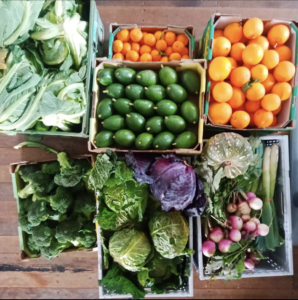
Organic? There’s been a string of articles in the newspapers lately about the use of pesticides in Australia, and how it compares to other parts of the world such as the well regulated European Union. As such we’ve noticed a renewed interest amongst our members about the status of the products in our shop.
Wholefoods has always had a deep commitment to organic and regenerative farming practices and we attempt to purchase organic, biodynamic and spray free products whenever possible. We do not however exclusively stock certified organic products. Our 2021 survey showed that organic status was a first priority for a lot of members (38%). However many members gave top priority ranking to other factors, such as buying in bulk to reduce packaging (23%) and buying direct from farmers (15%).
Our purchasing guidelines specifies three main areas of consideration when choosing products:
- Locality – Choosing products that are produced or grown in our local area, or as close to here as possible, reduces emissions associated with transport and storage, and supports local food security by strengthening supply and demand.
- Production – Choosing products from producers that practice organic and regenerative agriculture ensures healthy chemical free food, promotes local biodiversity, soil health and carbon sequestration.
- Packaging – Choosing products that are available in bulk with minimal packaging reduces emissions of excessive package manufacturing, decreases landfill and helps to minimise harm to water sources and the local environment.
Other considerations include delivery options and whether it is possible to purchase directly from producers, popularity (‘staple’ products) and ethical practices in product development and processing.
Recipe submissions- If you have a recipe idea brewing, we’d love you to put some time aside to write it down and send if through.
Cookbook Recipes can be submitted via the link on our website.
Opening hours
Mondays 9.30-11.30am
Wednesdays 2-4pm
Thursdays 3-5pm
Saturdays 11am-1pm
Location: Hepburn Wholefoods Collective · 11 Perrins Street · Daylesford, Vic 3460 · Australia
and yes, you can join or renew your membership at the shop!
Membership: $40 per year, $20 per year concession, FREE for volunteers.
25. Flood Resources

Financial support for flood-affected farmers
Agriculture Victoria has advised of the ‘Victorian Primary Producer Flood Relief Program’ support package available for flood-affected farmers:
• Primary Producer Clean-Up Relief Grants: $10,000 grants to cover the cost of the clean-up and get businesses up and running again
• Primary Producer Concessional Loans: Up to $250,000 to restore or replace damaged equipment and infrastructure, or to cover the short-term business expenses.
• Primary Producer Transport Subsidies: Up to $15,000 to support the transport of emergency fodder or stock drinking water, and the movement of livestock.
To find our more and understand eligibility and application processes, visit: Rural Finance or contact Rural Finance on 1800 260 425.
Photo: ABC News
26. New Economy Network- Housing Week Recordings
Scroll down for recordings
27. Walking Together- A Reflection from Jan Wositzky
Makarrata = ‘coming together after a struggle, facing the facts of wrongs and living again in peace.’
This column is written by Jan ‘Yarn’ Wositzky OAM
Walking Together. To travel, physically or metaphorically, side by side, to a destination. Let’s call it towards Equality, Dignity and Respect – though we need Dignity and Respect to even begin. And who’s walking? On the one hand there’s Indigenous, Aboriginal and First Nations people of various tribal/language groups. But what should we whitefellas call ourselves? For surely to dignify ourselves alongside Aboriginal/Dja Dja Wurrung people, we need a good name?
Europeans? Colonists? Migrants? White Australians? Settlers? None of it works, does it? We’re the post 1788 people without a proper name. How undignified! Aboriginal people have called us many things, including ‘Balanda’ (Hollander) and ‘Gubba’ (government man) – but the name we most often use for ourselves is ‘Settlers’. However ‘Settlers’ is a colonial conceit. Our coming was, and is, very unsettling for Indigenous people. So before we take a first step, let’s be honest and call ourselves the … Un-Settlers. The first Un-Settler in Djaara country was Major Mitchell in 1836, followed by squatters, gold diggers, industrialists and now us.
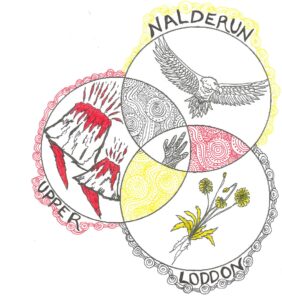
And, before we stride out, so as to begin with appropriate humility, a timeline: Aboriginal footprints have marked this land for at least 60,000 years; transfer that to an hour on the clock and the Un-Settlers of 1788 arrived at six seconds before the hour. And by God – yes, by Him! – they made rapid work of clearing the trees, changing the rivers and imposing our story on this continent. However Indigenous stories pre-date Adam and Eve by millennia, so of course in this Walking Together it’s surely Indigenous people who should be leading the way.
For a start, they’re writing arguably the most powerful television (Redfern Now), theatre (Blackie Blackie Brown), literature (Dark Emu), dance (Bangarra), history (The Australian Wars) as well as the most generous and evolved political documents (Uluru Statement from the Heart). They are the natural teachers, we the natural students, in this land.
However, digesting all the knowledge that Aboriginal people have to offer is not going to be enough to get us to the end of the walking, as equals. Hanging a dot painting on your wall or buying a ticket to First and Forever, A Celebration of Blak Excellence at Hanging Rock on November 27 – not worth missing! – cannot in itself get us there.
There’s another side to this – knowing who we are and who we have been in this country. And in the centre of that is a mighty moral and practical problem: the original sin for Aboriginal people is that the British came and took their land; and now it’s us Un-Settlers who have inherited that land; and even though we might support Sovereignty, Land Rights, Self Determination, Justice and Truth Telling, we’re not giving back our house blocks, are we? I’m not. And you? So, to walk together as equals we need to resolve this problem, in our hearts and politically. For a start, it was colonial governments that sanctioned this original theft, so this nation has a massive reparation bill to pay. Maybe then we can really start to walk together.
But to take heart, we’ve come a long way. At high school in the 1960s I was given an essay topic with a preamble which stated that ‘when the First Fleet arrived, Aborigines, who had weaker genes, simply melted away, like mist in the morning sun. Then came the question: “For the remnants, which is best – assimilation or integration?” I dearly wish I still had my essay to read, but at least those who wish to keep telling those lies are now discredited.
Once we were not on the walking together journey at all. Now some of us are making steps as best we can. One day we’ll catch up. And to get there what we Un-Settlers need, desperately and deeply, is to come to terms with who we are and what we have been. Then we can begin Walking Together, in dignity and respect, as equals.
And to finish: how many Indigenous people died in Queensland’s Frontier Wars? Approximately 62,000. And 61,519 Australians died in the First World War.
Nalderun Education Aboriginal Corporation is a service that supports the Aboriginal Community, led by Aboriginal people. Many people and organisations in the Mount Alexander Shire contribute to Nalderun; the name is a Dja Dja Wurrung word meaning “all together”.
More information can be found at www.nalderun.net.au
28. Mt Alexander Shire- Community Reference Group – 10-year Climate Change Strategy
Council is committed to addressing the current and future impacts of climate change on the health, economy and well-being of the people of the Mount Alexander Shire and to its environment.
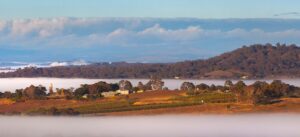
We’ve made steady progress in delivering our Roadmap to Carbon Neutrality 2020-2025 as captured in the recently released Progress Report, including:
- Electricity for Council operations is sourced from 100% renewable wind power
- Almost all street lights have been upgraded to low-energy LEDs
- We’ve purchased our first electric vehicle which marks the beginning of our transition to a fully electric fleet.
Council’s operational emissions are an important part of the puzzle, but there’s much more to be done.
That’s why we’re developing a 10-year Climate Change Strategy. The Strategy will provide strategic direction to enable Council to focus and prioritise its efforts on emissions reduction and adaptation within its own operations and within the broader community. There are many community initiatives focused on climate change within the shire, so we look to collaborate and complement rather than replicate this important community work.
How can you get involved?
We recognise the significant expertise and good will within our communities, and that we need to develop our climate response together.
October 2022
We are forming a Community Reference Group to guide Strategy development and support community engagement. We are looking for Shire residents who understand the challenges posed by climate change, and want to contribute to our Shire’s climate response. People who can bring ‘word on the street’ into the conversation and make sure we’re hearing from a broad range of community members. Find out more or apply to join the group at Climate Change Strategy 2023-2033 | Shape Mount Alexander. Applications close Tuesday 1 November.
November 2022
We are currently busy reviewing community feedback from past climate-focused surveys and events. In November we’ll present the key themes from past feedback, and check in to make sure we’re heading in the right direction before developing the draft strategy. We will also hold stakeholder interviews with community groups active in this space.
February to March 2023
We will seek community views on the draft strategy, before it goes to Council for endorsement. You can register to receive updates on the project via the Shape platform.
For more information: Melanie Marshall | Climate Change Coordinator | Mount Alexander Shire Council – mmarshall@mountalexander.vic.gov.au
29. Wombat Forest Care
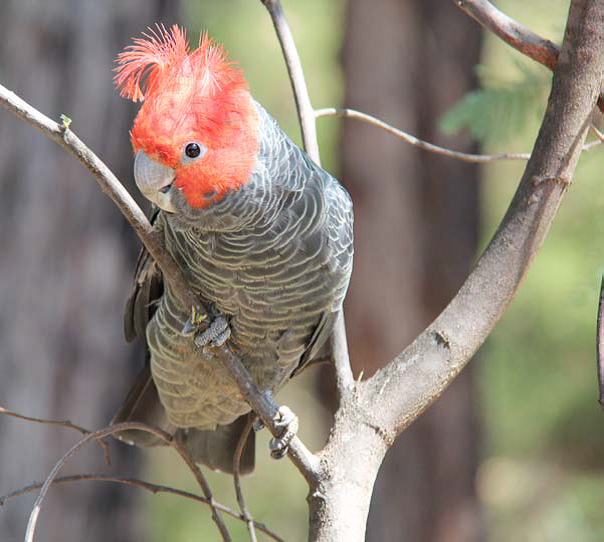
in March this year, mainly due to a sharp decline in their estimated population. There was a major loss of habitat in 2019–2020 bushfires, but declines had also been recorded throughout their range prior to the fires. Fortunately the Wombat was not impacted by fire during the summer of 2019–2020, but there was a loss of many thousands of trees in the extreme wind event of June 2021. Gang-gangs are the least studied of the cockatoo family. To understand the environmental factors leading to their decline it is important to collect data regarding their locations, breeding and food sources.
Michael is beginning to coordinate and encourage widespread monitoring of Gang-gang nests this breeding nesting ecology across its range, so that more informed and effective conservation of this magnificent cockatoo can occur. Like so much of the fauna in the Wombat, Gang-gangs are reliant on tree hollows for breeding and not just any hollow will do. It has to be the right size; roughly 30cm x 30cm, but with their strong beaks Gang-gangs can enlarge a smaller
hollow. Both sexes chew the sides of the hollow and use the wood chips and fragments to line the nest. If you are walking in the Wombat Forest and surrounding area in the next few weeks, please keep an eye and ear out for Gang-gangs and look for hollows with chew marks at the entrance.
Anyone living close to the Wombat Forest, or a patch of bush with some fairly sizeable trees, has a good chance at this time of year to hear the very familiar call of the Southern Boobook Ninox boobook. From around mid-August, as the days lengthen, the two hoot call, so much a part of the Australian bush, starts to be heard throughout the forest following a long period of silence during the coldest days of winter. Calls are often continuous and can go for well over an hour, usually from the same spot. Unlike the Wombat’s other Ninox owls, the Powerful Owl and Barking Owl, where the male voice is noticeably deeper than the female’s, this is not the case with the Southern Boobook where the difference between the sexes is barely discernible. Both sexes can engage in these long bouts of “territorial calling” at this time of year, which is mainly used as a warning to other Boobooks, both male and female, to keep away from an established territory. Occasionally, owls from neighbouring territories, usually the male, will engage in periods of aggressive calling to each other. The double hoot call is believed to be performed through a closed bill with both wings pressing against the body as each sound is emitted. This sounds tiring but a lot of effort is put into protecting breeding territories. While the core breeding territory can be reasonably small, possibly only several hectares, home ranges will be much larger and can overlap with a neighbouring pair’s territory. Another call in their repertoire is what’s known as “braying”, which is mainly given by the female during the breeding season and will most likely indicate an active nest in the near vicinity. It is hard to describe, but is a little like the sound made by sheep but with a vibrating element to it. The Southern Boobook is generally thought to lay eggs between August and November in southern Australia. However, well-known raptor expert, the late Jerry Olsen, believed laying can sometimes extend into February.1 This would be very late for any Wombat Forest birds when you consider the time from an egg hatching to fledging is over 70 days, meaning juveniles will be fledging when the weather is starting to cool and there is a noticeable decrease in the available food supply. Although recently fledged juveniles feed on birds and mammals brought to them by their parents, their own early prey capabilities are mainly limited to invertebrates. It is probably the reason why most Southern Boobook eggs are laid in spring, ensuring that when
chicks fledge in early summer, prey items like moths and beetles are at their peak abundance. The juvenile (or chick) of the Wombat’s three Ninox owl
species all have a very similar cricket-like trill that they gradually lose as they become independent from their parents. The young Southern Boobook’s trill is slightly shorter than the other two owls and very insect like, and particularly high-pitched. Last year on a cool evening in late March, just off Countess Track, I was quite surprised to see and hear two Southern Boobook juveniles, calling frantically, no doubt hoping to attract the attention of a nearby parent. In the Wombat, these urgent calls are usually heard during the warmer months, so maybe these youngsters were a pair of late starters and still some time from making their own way in the world.
1. Olsen, J. (2011). Australian High Country Owls. CSIRO Publishing, Melbourne
30. Farmers for Climate Action

31. Loddon Campaspe- Development of a Regional Food Systems Framework
The Healthy Loddon Campaspe (HLC) initiative is a Victorian Government funded project aimed at improving health outcomes in the Loddon Campaspe region – the heart of Victoria. There are six local government areas involved: City of Greater Bendigo, Campaspe Shire, Central Goldfields Shire, Loddon Shire, Macedon Ranges Shire and Mount Alexander Shire. HLC has recently received funding from the Victorian State Government for a further four years.
The development of a Regional Food Systems Framework will help guide the work of local government and key stakeholders in creating a healthy, equitable and sustainable regional food system.
The framework will align with and leverage key strategic policy, investment and initiatives at the LGA, state and national level and be informed by world’s best practice. The framework will identify recommendations (short and medium term) for HLC and its stakeholders to implement across the region.

Why a Food Systems Framework for the Loddon Campaspe region?
There are a variety of policies, plans and initiatives from across the region that highlight the need to focus on the food system, especially in relation to health, including:
• Findings from the 2019 Active Living Census
• Healthy Loddon Campaspe (formerly Healthy Heart of Victoria) regional workshop findings
• Municipal Public Health and Wellbeing Plans 2021-2025 from all six Local Government Areas (LGA’s)
• Greater Bendigo Food System Strategy
• Bendigo and Region City of Gastronomy
• VicHealth Local Government Partnership
Implementation of the framework will further benefit the region through:
• Increasing food security
• Increasing access and consumption of healthy food through policy and environmental change in key settings (i.e. workplaces, education settings, sport and recreation facilities)
• Increasing access to culturally appropriate and local food
• Increasing community knowledge and skills related to healthy food
• Increasing climate change adaptation to reduce its impact on health
A mapping and assessment of the regional food system is underway to get an understanding of the current landscape.
Following this, two workshops involving invitees from all parts of the regional food system will be conducted to further understand the current food system and then plan for what the food system framework will look like.
The final framework document will be developed by Foodways Consulting, in partnership with the HLC working group and reference group.
Timelines
Planning for the framework commenced in June 2022. The final Regional Food Systems Framework, including key recommendations, will be completed by December 2022.
How will we share the results and information?
Key stakeholder and broader community engagement will be undertaken throughout the framework planning and development process.
Following the development of the Regional Food Systems Framework, the results and key outcomes will be shared with all HLC stakeholders and the six local government areas.
What will we do with the framework once it’s complete?
Recommendations from the final Regional Food Systems framework will be assessed by HLC and used to provide direction on future projects within the region.
HLC will collaborate with other stakeholders and groups to implement key actions as appropriate.
For further information email hlc@bendigo.vic.gov.au
32. Transition Australia
Transition Australia is part of an international movement of local communities coming together to re-imagine and rebuild our world.
We invite you to take one more step: become a paid-up, signed-up member of Transition Towns Australia Inc. Why do that? Well – it gives you a stronger voice in our decisions (‘though we’ll listen to you anyway), you can join the committee if you wish, and it actually helps us pay the bills. We are a group of volunteers dedicated to connecting people or groups like you to strengthen our collective effectiveness by sharing stories and resources and bringing people together in online events across Australia.
We run on a shoe-string and we need your support. You could be one of the foundation 100, that is, our first 100 members, each paying $20/year to cover our basic annual costs: website maintenance and improvement, Insurance, CRM subscription and Zoom subscription (and we can give YOUR GROUP a zoom link for your meetings).
So, by joining Transition Australia:
- You are becoming part of an Australia-wide network of individuals and groups working to build a localised, sustainable and just future, from the ground up.
- Your membership fee will help to cover some of our basic running costs – and that means a lot to us.
We are writing to you as a representative of your group or organization – your organisation can apply to join as an Associate Member $10/year. A Member has voting rights, an Associate Member does not (but we encourage individual people within a group to join as Members and thus exercise voting rights). We invite groups to become Associate Members as a way of expressing support for the purposes of Transition Australia:
Our Purposes:
supporting the effectiveness of Transition Towns and other not-for-profit organisations in Australia that are working to advance an ecologically regenerative and socially just future by:
- raising and distributing funds to support the ability of these organisations to carry out activities that advance an ecologically regenerative and socially just future;
- providing a platform for all people interested in creating an ecologically regenerative and socially just future so they can identify common needs and community-led possibilities for positive change, discuss best practices and share inspiration and learnings;
- curating, developing and distributing tools, training and other resources to support organisations to carry out activities that advance an ecologically regenerative and socially just future; and
- engaging with the public, private and civic sectors across Australia to advance the aims of ecological regeneration and social justice in regard to public policy and decision-making processes; and
- being affiliated with the international Transition Network and liaising with other national Transition Town Hubs and national not-for-profit sustainability groups in seeking to achieve an ecologically regenerative and socially just future throughout the world.
Read about the history of the movement and our values and principles
33. Climate: The Long Game- Castlemaine Free University Reading Group 2022–2023
WHAT?
What can our responses to climate change tell us about ourselves, our society and humanity? This reading group will meet fortnightly to
select and discuss readings from significant but accessible books on moral, philosophical, long term and holistic paradigms for addressing the ongoing
existential threat of climate change. The group will meet at a mutually agreed time after 6pm for around 90 mins, on the second and fourth Thursdays of the
month.
 WHO?
WHO?
The reading group will start with a book chosen by the group’s convenor, local engineer, and climate activist Malcolm Robins — the just published What we
Owe the Future: A Million-Year View by renowned philosopher William MacAskill. The first session will take as its subject and title ‘The Long View’ from Part 1 of this authoritative and readable book. After working together through this book, group participants will be able to choose their own next reading and discussion challenge from a range of stimulating works.
For an introduction, see short article — https://theconversation.com/what-do-we-owe-future-generations-and-what-can-we-do-to-make-their-world-a-better-place-189591
WHERE? Northern Arts Hotel, 359 Barker Street, Castlemaine, 3450
WHEN? TBC but after 6pm on the second and fourth Thursdays of the month
FREE Drinks available for purchase
Castlemaine Free University
For more details and to subscribe to our e-list — https://anitranelson.info/cfu
34. Repair Cafes
Our Repair Cafes will be back again in January 2023
Daylesford– Sunday January 15th, 1-4pm at Victoria Park Pavillion, Ballan Road
Castlemaine– Cafes in New Year- Sunday Jan 29th, 10am to 1pm, rear of 30 Templeton St, Castlemaine

Article by Chris Hooper, Coordinator Castlemaine Repair Cafe- a contribution to International Repair Day- the anniversary of the start of Repair cafes in 2009.
35. Renewable Newstead- Solar Farm takes a big step forward
A small crowd attended the community information session in Newstead inSeptember to hear the great news that Newstead’s solar farm has the green light to go ahead. After years of negotiations and work, we are delighted that our partner, Flow Power, has declared their support for the project and will begin construction in earnest in the first quarter of next year.

The project includes a three megawatt (MW) solar farm, capable of producing more than enough energy for Newstead, and a battery that can store 5MW energy. The battery will store excess solar power generated and then dispatch it into the grid as required. This may be at night or when it’s cloudy and the panels aren’t collecting much solar energy.
Local people will be able to become Flow Power customers and know that their energy is the greenest energy available. A project to generate local energy that’s renewable and competitively priced. It will be available for everyone in our community to sign up for but completely optional. You can choose to buy from the Newstead solar farm or not.
Flow Power’s Head of Energy Projects, Tom Harrison, and Project Engineer Lachlan O’Brien attended the meeting. They answered detailed questions about the site, the storage battery and management plans. They said having a relationship with the local Renewable Newstead team helped bring the project to fruition.
The company is involved with at least 11 other energy generating ‘farms’ around Australia. Most are solar. Two harvest energy using wind.
Renewable Newstead, with the help of a $1.1 million Victorian Government grant, will pay the landholder lease costs and the cost to connect the farm to the electricity grid.
We want to help you understand how the farm can benefit your household/ business and our community and why you can be proud of having it here.
Please keep in touch with our news here and also feel free to email back any questions you have and we’ll try our best to answer (and we’ll try to pop them up on our Q and A page here).
36. Harcourt Organic Farming Cooperative
So, it’s been raining…You’ve probably noticed we’re in the middle of a La Niña – it’s been a bit hard to ignore! The last time we had this much water running on the farm was 11 years ago, in the 2010/11 season. That year the big dam overflowed so hard it had a current running through it for weeks. Then we had minor flooding in 2015. Last spring was pretty wet, and this year there’s no sign yet that things are easing yet – it’s raining as I write this.

It’s now completely obvious that “1-in-100-year” events are happening much more often.
We’re fine and very glad we live and farm on the side of a hill. Things could be so much worse, and we’re thinking of the communities north of us in Echuca, Swan Hill, Rochester, Kerang, Lismore, and many places in between. Hundreds of farms and houses have flooded and communities have been cut off for weeks. And of course, a number of people have lost their lives.
Yet in Australia, we’re relatively well off. This year flooding in Pakistan has killed almost 1,500 people, and more than a million have been displaced. There have been severe floods with millions affected in Colombia, Gabon, Indonesia, Chad, the Philippines, Venezuala, Nigeria, Sri Lanka, Vietnam, Mexico, Cambodia, South Sudan, Trinidad and Tobago, India, Thailand, and Ghana – and that was just in October!
We’re grateful that we’re safe and fairly well-resourced. But extreme seasons like this definitely have an impact on food production, and if you’re not a farmer it can be hard to know what’s really going on. So we thought we’d share the impact of this very wet spring on your local food supply, from the perspective of one farm.

The dairy (by Tess)
Even though the constant rain has made it hard to stay positive, I’m becoming more and more aware of how lucky I am in the dairy this season. For me, it’s about managing the logistic of it being wet, not how to deal with loss.
The cows are mostly fine in the wet except for Quartz who hobbles around with her sore feet which I am constantly trimming and poulticing. The paddocks are sodden, with an inch of water sitting on most areas. This means that it is very difficult to manage the herd without causing damage to the soil as they pug up boggy areas.
The mobile milking parlour is becoming less mobile as the locations I can find to park it where the cows can come to be milked, the calves can spend the night and I can drive to every morning are seriously limited to the side of the road/track.
I was on the phone a lot last week talking to other producers who I work with and it made me really appreciate my situation. So many stories of farmers spending all their time fixing fences due to trees and flood waters, farmers not being able to drive onto the paddocks to plant or harvest crops, crops stunted by the lack of heat, fungal infections, or completely wiped out by flood waters. There are some tough times ahead.
Yet driving out to collect our grain from Burrum Biodynamics last week we crossed over Bells Swamp, usually only recognisable as a swamp because of the dry red gums. This year it has burst into life, with water, growth, birds, and insects everywhere. It’s a good reminder that it’s us humans and our systems that are struggling the most, much of the natural world is thriving.
The market garden – Gung Hoe Growers (by Mel)
After having two previously cooler and wetter spring/summers I thought I knew what we were up for. However after watching my fellow grower friends live through full La Nina on the southeast coast of NSW for the last 2 years, when the rain didn’t stop I got in touch. Get another off-farm job was their immediate suggestion and a list of crops to not grow alongside a list that they had seen do well in the relentless wet, boggy conditions.
So I was fortunate enough to be able to (hopefully) find shifts at a local winery for events and had the most interesting experience working on a wedding whilst watching the weather radar come through with a front spotted with red (the heaviest) dots. Here we were, warm and dry (very grateful for rooves and that we live in a place where buildings are pretty good) whilst I was watching the weather outside pummel the crops, drown the garlic, wash away seeds, cause root rot and fungal disease and stunted growth due to water logging and the much much cooler weather. This year our spring crops either didn’t grow or died.
As a small business with not much buffer, we can’t really afford months and months of no crops as well as paying wages (hence my third job). We have been unable to get onto the field to prep beds for planting due to how wet its been and have to take the moments of dryish and sun to do what we need to. Unfortunately, this has meant a lot more hoeing (tilling) than we’d planned for, but we’ve done our best to keep it at a minimum.
This was our year to see what was possible, what we could do, the team and I, but I think I’ve accepted the fact that seasonality is becoming ever more a myth and this is the new future of farming. With no capital, we are unable to invest in the infrastructure we need to protect ourselves from the growing extremes and unknown. To say this season has been a rollercoaster doesn’t really express the stress and fear and emotional toll it is taking. Ever grateful for our Gung Hoe team on site and the background support who make it possible to turn up every day.
If there was ever a time to support your local producers, and plant some food in your own backyard, it’s now. Everyone across the board has been affected and I expect to see food chain disruptions in the following months. The bush has been resounding with life and vibrancy however and I am so aware of life brimming in other areas that aren’t the market garden. Making sure I keep that in sight also keeps the scales more balanced.
The orchard (by Meg from The Orchard Keepers)
This wet & wild weather has meant bogged tractors, a plethora of fungal diseases on the stonefruit, low pollination (bees only like to visit on sunny days!), hail damage, wet toes, and lots of jobs we just can’t do until it dries out. As we look across the orchard, we see a whole lot of trees under stress due to the wet weather. We are about to lose an entire block of peach and nectarine trees, and some cherries too. Apricots are struggling and many of our plums will be hail damaged. Despite our best care, and support from Katie and Hugh, overall, we are looking at a low yield for this season. On the upside, there have been stunning rainbows, loads of lovely beneficial clover coming up under the fruit trees, and we certainly have not had to irrigate yet!
Because of all this, we have made the difficult decision to cancel all of our weekly box CSA subscriptions for this season. In ordinary circumstances under a CSA model, our members would be with us through ups and downs and if we were 10 years in and they had tasted our apricots before, we might ask them to hang in there with us. But with the existing pressures of the season, the additional pressure of filling boxes was going to be too much for our team. We know for many of you that participating in the CSA represents a large outlay for your household budget and feel that the state of the crop this season is too much risk to pass on to our members. We’ll be selling fruit locally and in Coburg over the summer instead, and offering a lighter ‘Friends and Lovers of the Orchard Keepers’ or “FLO(C)K” subscription that will include two boxes throughout the season and access to our events.
Build your connection to the orchard and with us
We have some summer workshops coming up for any keen home orchardist (discounted prices for CSA members). If you are laboring over fruit trees in your own home, you might like to consider honing your skills and coming along.

Carr’s Organic Fruit Tree Nursery (by Katie)
We made the mistake of weeding before the day we got 100mm of rain. Bad idea. Our nursery rows run north-south downhill, and without the ground cover of the weeds, the topsoil just got washed down the hill and deep gullies formed alongside the young trees and seedlings that we’ve planted in the last couple of months.
We lost a few trees but were able to find most of them at the bottom of the hill and replant them. We had to scrounge topsoil from between the rows to fill in the gullies, so the whole nursery looks a bit messy – and it’s annoying that there’s so much soil at the bottom of the hill where we don’t want it!
Losing topsoil meant we also lost organic matter and nutrients, which we’ll now have to replace. We do this anyway – we usually weed, then compost, and then mulch, but we didn’t have time to do the composting and mulching before the rain. If we had, or if we’d left the weeds in place until after the worst of the weather, the soil probably would have had enough protection.
We’ve also now dug proper drainage ditches around the nursery to direct the runoff around the nursery, rather than through it. We’ve learned a lot this season about how to cope with a super-wet spring, but we’d rather not go through another one for a while!

The property
Our soil here at Harcourt is famous for its variability. We have topsoil in some places, clay in others, and massive granite boulders that make their presence felt in orchards and paddocks. This year our normally dry creek is running a banker and the dams have been overflowing for weeks. The soil is unstable. Trees have fallen over, sometimes onto fences.
The constant rain and extra traffic mean the driveway has washed out. This has made it hard for our people to get to work, and impossible for customers to come and pick up their produce. Kind neighbours have lent us their shed as a temporary pick-up point, and some of our farmers are having to do deliveries.
Getting through
Lost crops, dead fruit trees, and cows with sore feet. More work, more worry, and fears about the future – that pretty much sums up the negative impact of this weather pattern for everyone on our farm. For you – our lovely customers and supporters – that translates into less food we can offer you this season. The responsibility of not growing as much food as we’d like weighs heavily on our co-op members.
But it’s just a season! And even though we’ve had some losses, our diversity has pulled us through again, and we’re still on track to produce plenty of food. Thanks for your support, not just for us but for every farmer that’s going through this wet, wet season.
37. Mt Alexander LETS
“Eat locally grown, food in season.” Freshly picked, locally grown, low miles travelled fruit & veggies, homemade preserves, for your family.
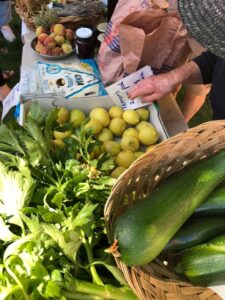
Trading days on Duke Street Castlemaine: Every Saturday morning: 8:30am to 12:30pm.
Maldon Community Market: 9am to 1:30pm @ Maldon Neighbourhood Centre @ 1 Church Street, Maldon, second Sunday of each month.
This market can carry home grown produce – fruit & vegies, preserves – relishes, pickles, jams, sauces, soaps & plants. There is no kitchen baked goods at this market.
“WHOLE FOODS PROJECT” Available at Ma LETS on Duke Street trading days, every Saturday. Organic, Bio- dynamic, wholesale prices, offering a selection of dry goods in size for kitchen use only to start the project. No Bulk orders @ this stage.
The items supplies available now all @ 4 Pods per bag. Chick peas, Red lentils, Quinoa, Mung beans, Sunflower Kernels, White, Brown & Jasmine rice,
White Heritage, Wholemeal & White Spelt flour, Rolled Oats, Semolina, Whole grain, Pitted dates, Sultanas, Cashews, Walnuts
*Contact list:
Secretary: Matt Gibson 0423140881 email: gibbo68@hotmail.com
Treasurer Transaction Manager: George Ryan 54762710 email: transmanager@gmail.com
Ma LETS newsletter: Loretta De’nham malets.editor@gmail.com
Come to the Trading days to trade your home grown produce, ideas & do you weekly grocery shopping.
38. Food for Thought
38.1 https://artistasfamily.is/2022/11/15/stinging-nettle-for-arthritis-and-allergies-neopeasant-medicine-food-series/
38.2 Life After Progress: Technology, Community and the New Economy – a new collection of essays by Helena Norberg-Hodge and her colleagues at Local Futures. The book is now available from our online store.Some of the essays ask us to rethink our most basic assumptions about progress, poverty, and happiness, while others shine light on the root causes of our multiple crises: from climate change and income inequality to terrorism and right-wing authoritarianism. All point towards the most strategic steps we can take to bring about a healthier, happier world.As Bayo Akomolafe writes in his foreword:“This book is a cartography of sensations guiding us through the din of demise. A map to shake you out of the complacency of being so thoroughly found, so thoroughly intelligible, so worryingly available to the imaginations of the familiar.”
38.4 Living in an ecovillage
38.5. Ancient Futures: Learning from Ladakh, by Helena Norberg-Hodge, is now available as an audiobook.
Translated into more than 40 languages, Ancient Futures is a rare first-hand account of an indigenous culture that had avoided the worst impacts of colonialism. It therefore serves as an invaluable lens for questioning deeply held assumptions – ubiquitous in the modern, globalized world – about who we are, and what ‘prosperity’ and ‘progress’ really mean.

![[ Random Image ]](https://leanganook.org/images/image_10.jpeg)
